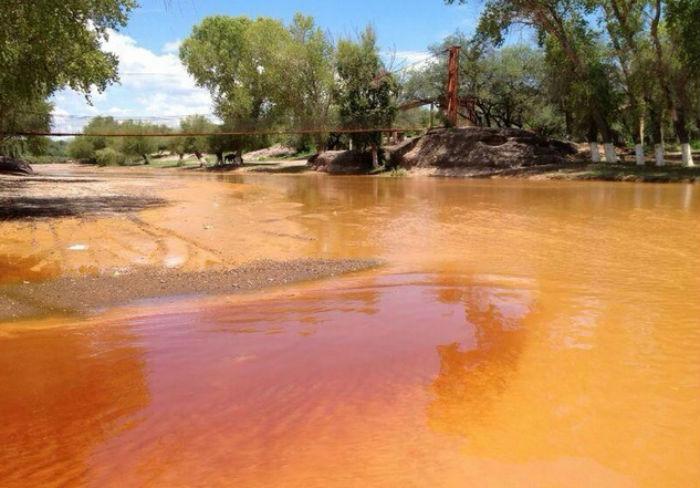Alejandro Navarro recently graduated with a bachelor’s degree in Economics and is currently a graduate student at El Colegio de Sonora, where he is pursuing his Masters in Social Sciences with a minor in Public Policy Analysis of Water Management. Alejandro is supported by the International Water Security Network and here he outlines his research into the Cananea Mining Spill of 2014.

(Source: proceso.com.mx).
Buenavista del Cobre, located on the outskirts of Cananea in northern Mexico, is a vast open-pit copper mine that has been operating for more than a century. The town is split up by the watersheds of two rivers: the Sonora, and the San Pedro (a tributary of the Colorado River). On 6 August 2014, a tailing pond breached, releasing 40,000m3 of copper sulphate into a tributary of the Sonora River. The spill polluted Arroyo Las Tinajas (17.6 km), the Bacanuchi River (64 km) and the main stream of the Sonora River (190 km). These streams cross over seven municipalities inhabited by 20,048 people. The pollution led the government to close 322 wells, leaving local communities without water for domestic and farming uses.
The objective of this study was to analyze the institutional response from local, state, and federal government, as they sought to solve and remediate the problems, struggles, risks and economic losses caused by the pollution. I identified the response framework set by the federal government of Mexico and compared it with the current national framework to deal with natural disasters (Mexican National Civil Protection System, SINAPROC by its acronym in Spanish). The latter has proved to work well, especially at coordinating government at different levels. I found that instead of following this framework, the federal government chose to override the state and municipal governments. This led to the implementation of action and policies that were characterized by asymmetric information and high transaction costs, and that resulted in a poor and ineffective response.
The findings suggested that there was an institutional failure because the government chose to carry out the remediation actions through the National Water Commission (CONAGUA), a highly centralized federal agency, instead of working through collaborative networks with local authorities and civil society organizations. It is critical that we learn from this devastating event and adjust our institutional responses to deal with these issues, so that local actors are involved in the process.
